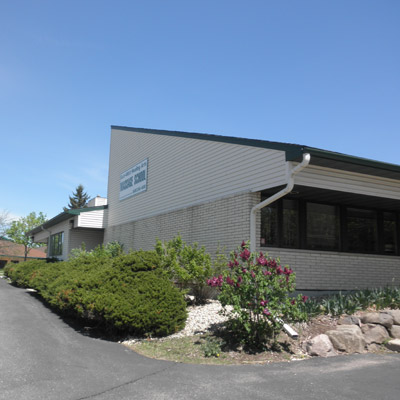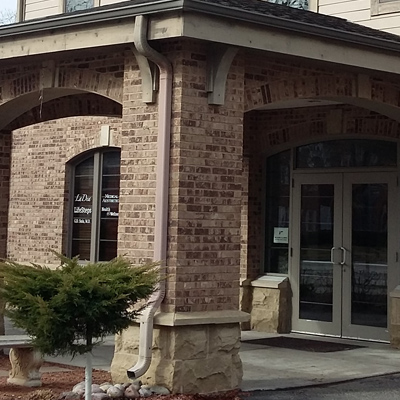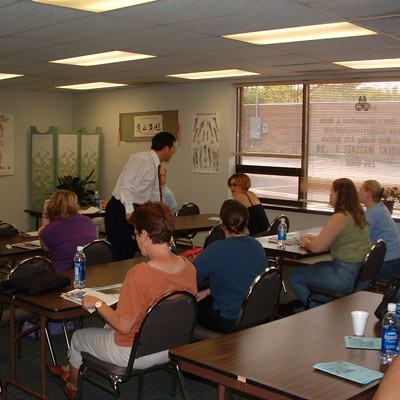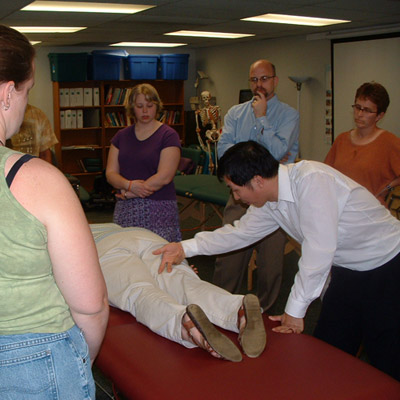The history of therapeutic massage in Western civilization goes back to the roots of Western medicine in ancient Greece. Today we usually think of Western medicine as not being holistic in its philosophy and approach, but it was not always that way.
In the 5th century B.C.E. in Greece, Hippocrates, the father of Western medicine, said, “A physician must be experienced in many things but assuredly also in rubbing.” He said that massage — along with fresh air, good food, baths, music, rest, and visits to friends — is key to treating disease.
Aesculapius also promoted massage, in conjunction with herbs, diet, relaxation, and hydrotherapy. Aesculapius was another 5th century B.C.E. healer in Greece who was pivotal in the development of Western medicine.
You might not recognize his name, but you’re bound to be familiar with the symbol of Aesculapius: two serpents coiled around a staff, the symbol of modern Western medicine. This image is related to the ancient yogic conception of kundalini, the energy coiled at the base of the spine that rises upward through the body with meditation and yogic practic, visualized as a serpent. If you’ve seen a picture of the body’s seven chakras connected by a spiral or a double spiral, you’ve seen the diagram that prefigured the staff of modern Western medicine.

Sweden’s Henrik Ling (1776-1839) is considered the father of modern Western massage. Ling said, “We ought not to consider the organs of the body as the lifeless forms of a mechanical mass, but as the living, active instruments of the soul.” He was speaking during the heyday of the Industrial Revolution, however, so he was going directly against the mainstream by saying so. At this time, humans were discovering the incredible power and versatility of engine-driven machines, like the locomotive train and manudacturing equipment.
Seeing the human body as a marvelously complex machine, fueled by food instead of coal, seemed like a great advance at the time. But such thinking only widened the gap perceived between mind and body, not to mention spirit, that had begun to develop in Western thinking shortly after the days of Hippocrates and Aesculapius.
Still, many were attracted to Ling’s regimen of massage and gymnastics, which was rooted in his understanding of Western physiology, His system, known as Swedish Massage, spread from Sweden over the course of the 19th century into the European continent and America.
Ling based his regimen on what he learned about the ancient healing modalities of China, Rome, Greece, and Egypt.
In China, the history of massage is as old as the written history of China itself. The earliest writing found in China, which dates from 1400 B.C.E., discusses massage, acupuncture, and moxa (the burning of herbs for therapeutic purposes).
Traditional Chinese Medicine, a holistic system of healing modalities including dietary therapy, acupuncture, herbal medicine, and exercise, has always included massage, which since 800 C.E. has been known as “TuiNa” (literally, “push and grasp”).
Today TuiNa is increasingly popular in the West, as people turn to massage for serious therapeutic work, as well as for pleasure. Through much of the 20th century, massage in the West was mainly seen as a luxury — for feeling pampered and relaxed (Of course, relaxation is itself deeply therapeutic, but this was the mainstream view.), a diversion for the wealthy. As natural healing and holistic approaches caught on over the latter half of the twentieth century, more and more people realized how much could be accomplished with the healing touch.
Today, it is widely recognized that therapeutic massage has something to offer just about everyone, from infants to the elderly, from athletes maximizing their performance or nursing hurt muscles back to health to those in hospice care who benefit from pain relief and increased range of movement that bodywork can bring. Children, pregnant women, manual laborers, office workers — indeed everyone regardless of age or physical condition — can benefit from massage. As this realization has reached critical mass, the career potential for massage therapists has exploded, and opportunities to practice massage continue to grow.
CONTACT US

Madison campus
6425 Normandy Lane
Madison, WI 53719
Phone: (608) 240-1600
admin@acupressureschool.com

Milwaukee campus
4601 N. Oakland Ave, Suite 218
Milwaukee, WI 53211
Phone: (414) 312-7929
MKECampDirector@acupressureschool.com

NEXT CLASSES START
Madison 2024 Spring Classes – May 19th, 2024. Enroll Now!
Milwaukee 2024 Spring Classes – May 12th, 2024. Enroll Now!

